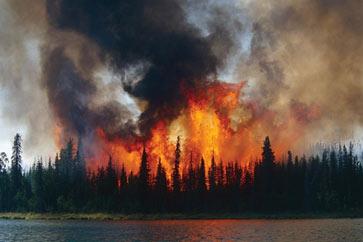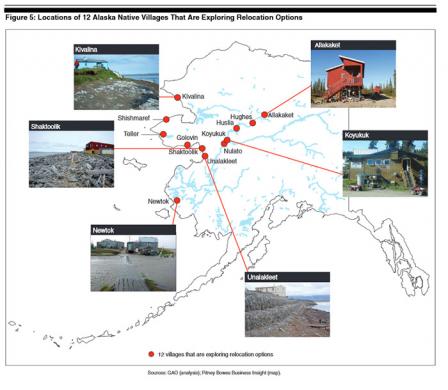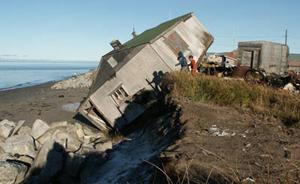The Arctic Afire
"Higher temperatures also spur more thunderstorms."
"Lightning from these thunderstorms is what has been igniting many more fires in these recent extreme events."
Sander Veraverbeke, study author, Arctic Report Card
"High latitude ecosystems are characterized by unique fuels. In particular, fast-drying beds of mosses, lichens, resinous shrubs and accumulated organic material [duff] that underlie dense, highly flammable conifers."
"These understory fuels cure rapidly during warm, dry periods with long daylight hours in June and July. Consequently, extended periods of drought are not required to increase fire danger to extreme levels in these systems."
"During this period, 65,000+ strikes in Alaska gave rise to nearly7 270 ignitions of the preconditioned fuels."
"2014's fuel conditions reached a level that is 34 percent to 60 percent more likely to occur in today's anthropogenically changed climate than in the past."
Arctic Report Card
 |
| In recent years, an increase in large wildfires has been seen in Alaska. Credit: USGCRP (2014) |
This annual compendium of peer-reviewed research with its focus on climate change and its impact on the North has recently been released with a warning of what could be considered to be the 'new normal' in the North, according to climate scientists. Average temperatures remain relatively cool across the Arctic as they did the summer of 2017, but the trend is a low and aggressive warming. Decade on decade winter arrives with warmer air, warmer water, less ice and, surprisingly, more fire events.
The mental image that has infiltrated the awareness of most people who keep abreast of environmental news is of starving Polar bears, melting glaciers and tundra unfrozen. The fact of fire becoming common in the Arctic environment intrudes as an unexpected visitor in the land of ice and snow and penetrating cold, and it is one that is destined to continue and likely increase in incidence.
There is a "strongly non-linear" relationship identified between fire and climate in the North, according to the report.
The correlation becomes clear when it is explained that mean temperatures in July have become common over the past 30 years, seeing 13.5C the acknowledged average. One study the report cites points out that lightning ignitions in the Northwest Territories (Canada) and Alaska have increased two to five percent annually since 1975. Two issues come to play: more fuel for more lightning to ignite. The longer and hotter, stormier summers in the North result in drier, more fertile ground.
 |
| Locations of 12 Native Villages considering relocation. Source: GAO (2009 |
Earlier starts on Northern summers that last longer make for a longer snow-free season in Alaska, increasing by roughly five days each decade, one 2011 study points out. Giving the northern earth more time to dry itself in an environment where even small changes in temperature can result in a large flammability impact of northern soil. So, along with greater numbers of fires in the North, they burn longer, consuming more territory.
In 2015, 5.1-million acres were burned in Alaska, representing the second-worst fire season on record there, which only 2004's fire season exceeded with the burning of 6.2-million acres.
A confluence of predictable factors was held to be responsible, according to a 2016 study, when an unseasonably warm spring caused an early snow melt and a June heat wave dried the surface and subsurface fuels (duff/forest detritus). Followed by a cluster of unusual storms, a cascade of lightning strikes resulted in hundreds of fires.
Climate models mentioned in the report card predict a fourfold increase in area impacted by wildfires in the North by century's end.
 |
| Thawing permafrost: the ground under a home in Shishmaref, Alaska collapses from erosion. Image credit: The Alaska Conservation Foundation (2010) |
Labels: Climate Change, Environment, Nature, Northern North America, Science, Wildfires

0 Comments:
Post a Comment
<< Home